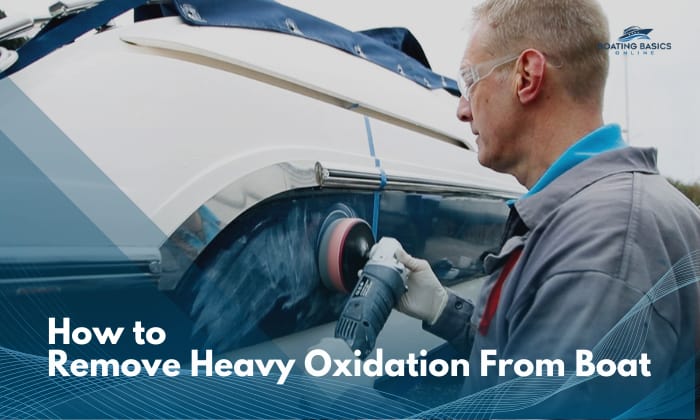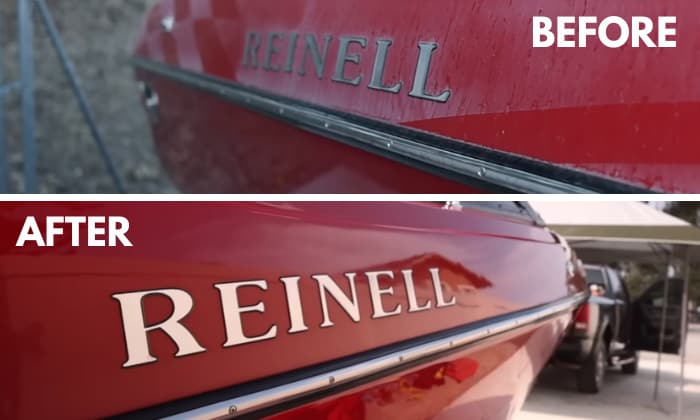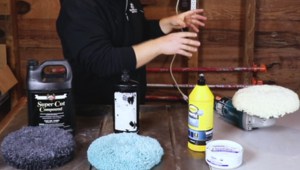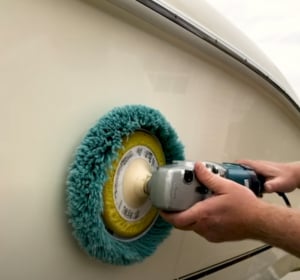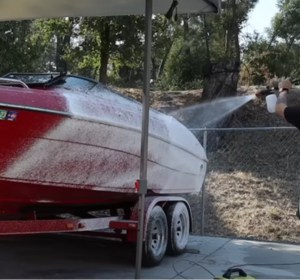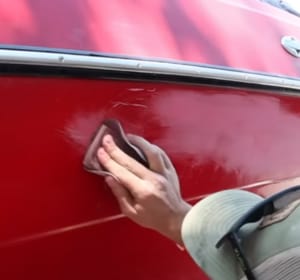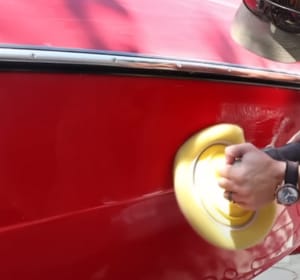There’s no greater tragedy than a once-radiant boat losing its shine. It falls into every owner’s hands to learn how to remove heavy oxidation from a boat. By “get rid of oxidation,” I mean complete restoration of that sharp, good-as-new look.
This guide will help you achieve that. It will walk you through two methods that work time and again. Usually, we overlook problems when removing oxidation from a fiberglass boat – that’s not how I work.
Table of Contents
Ways to Remove Heavy Oxidation from Boat
Firstly, let me clarify that these boat restoration methods only apply to fiberglass boats.
While aluminum boats aren’t immune to oxidation, they’re usually not what we’re talking about with regard to this issue. Rather, we almost always mean the removal of oxidation from gelcoat.
With that out of the way, here are the two methods that work for me out of the numerous strategies I’ve already tried in the past:
- Comprehensive Approach to Removing Heavy Oxidation
- Wet Sanding and Polishing Method
Honestly, I prefer the second, more comprehensive method, but you can try either one out to figure out which works best for you.
However, if you want to be sure with your heavily oxidized boat, a better idea would be to incorporate some wet sanding first and then proceed with the comprehensive method.
Method #1: Comprehensive Boat Oxidation Removal
If you can find an oxidation removal kit, you’ll likely be able to save more money. But I’ve listed down every tool you need for each method to be sure.
What to Prepare
- Heavy-cut wool pad
- Presta SuperCut compound
- Suitable polish for your boat’s gel coat
- Polishing pads
- Mild soap
- Wax for boat hull
- Applicator pad or brush
- Water
- PPEs (e.g. safety goggles and gloves)
Step 1: Apply the compound
We will be relying on the compound to eliminate oxidation in this method. Out of the many oxidation removal products I’ve used, the Presta Super Cut Compound has shown to be the one capable of doing that.
Make sure to pair it with a heavy-cut wool pad, nothing else! I can’t emphasize buying a high-quality pad enough to get the stellar results you want.
Besides, you may end up damaging your boat with unsuitable foam or other synthetic pads.
Ready? Apply the compound to the pad then start buffing. This should be straightforward. However, I want you to pay attention to one crucial detail:
Note:
Make sure that the surface has a crystal-clear reflection of you once you stand facing it. This effect is a great sign that you’ve removed all oxidation AND that it won’t be rearing its ugly head any time soon.
Feel free to reapply more of the compound until you get that kind of result.
Step 2: Polish till you get the perfect finish
By this step, your boat should be looking like new already. But, of course, we want to restore fiberglass boats perfectly. This is where the polish comes in.
You can use any product you see fit for your boat or readily available to you. Just apply a couple of dabs on a pad and start polishing the surface with it.
You may not see much of a difference superficially, but rest assured that this is necessary to achieve that near-flawless finish we all want our boats to have.
Take your time to spot any swirl marks you may have left behind with your buffing (and sanding).
Step 3: Wax to keep the shine
Last but not least is the application of anti-oxidation wax. I seldom aim for just removing the oxidation. I want to keep it from coming back (and ruining the free time I have on the weekend) as much as possible – I mean, don’t we all, boat owners want this?
Method #2: Wet Sanding and Polishing Method
You can try this method for heavy oxidation since it has worked for me. It’s better suited for milder issues, though.
What to prepare:
- 1200, 2000, and 3000 grit wet/dry sandpaper
- Water
- Soft sponge
- Dual-action sander (optional)
- Foam pads
- Rotary buffer
- Gel coat compound
- Waffle pad
- Polishing compound
- Clean rag
Step 1: Prepare the surface
Take the time to clean the boat with a mild soap that’s suitable for your vessel. Pinpoint the areas that you’ll be wet sanding – feel free to mark them off, so you can compare the results after you’re done.
You can now start making a mixture of a small amount of Dawn dish soap with water. You’ll be using it as a homemade lubricant for sanding. And, before you forget, put on your PPEs!
Step 2: Start wet sanding
Spray the lubricant you made onto the surface you want to sand. Once you’ve sprayed a good amount, start sanding the surface with the 1200-grit. You can wrap it in the soft sponge to use your main boat oxidation remover for now.
Wait for the brown water produced from wet sanding to become white. That often means you’ve gotten rid of all the oxidation, and you’ve reached the clear part of the gel coat.
Gradually progress to higher grit sandpapers to achieve a smooth finish. Take turns lubricating and sanding as you do so. Don’t forget to wipe off the brown water with a clean rag as you work.
Step 3: Begin buffing
Apply the gel coat compound of your choice onto the sanded area. Feel free to use the applicator pad or brush to apply it according to the manufacturer’s instructions.
Once ready, start the buffer at a slow speed then gradually increase it, while you apply even pressure. Just continue doing this until you achieve the kind of gloss you want and once the surface is free from any unwanted sanding marks.
Step 4: Top it all off with a polish
Apply the polishing compound/wax on the surface you worked on. Use the foam pad or waffle pad with the rotary buffer. Polish at a low speed to improve the shine and remove further imperfections.
Conclusion
In the end, learning how to remove heavy oxidation from a boat and actually what you’ve learned involves deviating from a set number of steps. After all, “heavy oxidation” is a fairly subjective description – and every fiberglass boat is inevitably different.
This is why I encourage you to do your own experiments. Combine methods where you see fit. Who knows? That extra step or two could very well be the missing link you need to get spectacular results.

“I am James Harvey – founder of Boating Basics Online. It is established with the drive to help out first-time boaters, which are those desiring to explore their way through the water. So if you are new to boating, start from here with me. “

